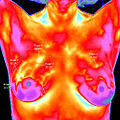Sheffield: Study shows there are six different types of obese people. Treating individuals according to which ‘type’ could be more effective.
One size does not fit all when it comes to tackling obesity, according to a new study by the University of Sheffield. Researchers
looking at how to tackle the country’s obesity issue – which costs the
NHS £6billion pounds every year – found that currently individuals are
often treated the same regardless of how healthy they are, where they
live or their behavioural characteristics.
Only good, independent and reliable information about health from experts.
Thursday, April 30, 2015
Innovation gives pregnant women with diabetes round-the-clock glucose control

Leeds: Achieving
better glucose control in pregnant women with diabetes by using
continuous glucose monitoring may help them give birth to healthier
children, new research from the University of Leeds says.
Up to 50% of babies born to women with diabetes
are born too large, which can lead to greater intervention and problems
during childbirth and also increase the risk of the child developing
diabetes, obesity and cardiovascular disease later in life.
Babies feel pain like adults
Oxford: The brains of babies ‘light up’ in a very similar way to adults when exposed to the same painful stimulus, a pioneering Oxford University brain scanning study has discovered. It suggests that babies experience pain much like adults. The study looked at 10 healthy infants aged between one and six days old and 10 healthy adults aged 23-36 years. Infants were recruited from the John Radcliffe Hospital, Oxford (UK) and adult volunteers were Oxford University staff or students.
Urine profiles provide clues to how obesity causes disease
World first for artificial pancreas team
Cambridge: The
first natural birth to a mother with diabetes who has been fitted with
an artificial pancreas took place this week. The device has been
developed by researchers at the University of Cambridge. The artificial pancreas is an
exciting new technology that may help us to treat diabetes in pregnancy
and create a group of healthier mothers and babies.
Cambridge: The
first natural birth to a mother with diabetes who has been fitted with
an artificial pancreas took place this week. The device has been
developed by researchers at the University of Cambridge. The artificial pancreas is an
exciting new technology that may help us to treat diabetes in pregnancy
and create a group of healthier mothers and babies.
No reason why calories in alcohol should be treated differently
BMJ: Make calorie labels
compulsory on all alcoholic drinks, says public health expert There is no reason
why calories in alcohol should be treated any differently from those in food. Calorie counts should be mandatory on all alcoholic drinks as
a matter of urgency, argues a leading public health doctor in The BMJ this week. Fiona Sim, Chair of the Royal Society for Public Health, says
alcoholic drinks contribute to obesity and the law “should require restaurant
menus and labels to make energy content explicit in addition to alcohol
content.”
Why illness might leave a bitter taste in the mouth
Nature: Molecule that triggers inflammation also seems to influence how mice sense bitter flavours. People who are
ill often complain of changes in their sense of taste. Now, researchers
report that this sensory shift may be caused by a protein that triggers
inflammation. Mice that cannot produce the
protein, called tumour necrosis factor-α (TNF-α), are less sensitive to
bitter flavours than normal mice, according to a study published on 21
April in Brain, Behavior, and Immunity.
High-Dose Sodium Nitrite with Citric Acid Creams Better Than Placebo for Anogenital Warts
JAMA: A high-dose treatment of sodium nitrite, 6 percent, with citric acid,
9 percent, creams applied twice daily was more effective than placebo
for treating the common sexually transmitted disease of anogenital
warts, according to an article published online by JAMA Dermatology.
Laetrile treatment for cancer: risk of cyanide poisoning
Cochrane: Laetrile
is a word created from the first letters of laevorotatory and
mandelonitrile and describes a semi-synthetic form of amygdalin.
Amygdalin is a compound that can be isolated from the seeds of many
fruits such as peaches, bitter almonds and apricots. Both laetrile and
amygdalin have a common structural component, mandelonitrile, that
contains cyanide.
Treatments for rosacea
Cochrane: Which treatments are effective for rosacea? Rosacea is a common skin condition causing flushing, redness, red pimples and pustules
on the face, and should not be confused with acne. Dilated blood
vessels may appear near the surface of the skin (telangiectasia). It can
also cause inflammation of the eyes or eyelids, or both (ocular
rosacea). Some people can develop a thickening of the skin, especially
of the nose (rhinophyma). Although the cause of rosacea remains unclear,
a wide variety of treatments are available for this persistent (chronic) and recurring and often distressing disease. These include medications applied directly to the skin (topical), oral
medications and light-based therapies.
Treatments for unwanted male pattern hair growth in women
Cochrane: Up
to 5% to 10% of women are hirsute (hair in areas where normally only
men have hairs such as moustache, beard area, chest, belly, back etc).
The most common cause is polycystic ovary syndrome. Hirsutism can lead
to psychological distress, low self esteem, decreased self image,
depression, feelings of shame and social difficulties. Which treatments (except laser and light-based therapies alone) work best for hirsutism?
A dark night is good for your health
 TheConversation: Today most people do not get enough sleep. The Centers for Disease Control and Prevention (CDC) has called insufficient sleep an epidemic. While we are finally paying attention to the importance of sleep, the need for dark is still mostly ignored.
TheConversation: Today most people do not get enough sleep. The Centers for Disease Control and Prevention (CDC) has called insufficient sleep an epidemic. While we are finally paying attention to the importance of sleep, the need for dark is still mostly ignored.That’s right. Dark. Your body needs it too.
Being exposed to regular patterns of light and dark regulates our circadian rhythm. Disruption of this rhythm may increase the risk of developing some health conditions including obesity, diabetes and breast cancer
Explainer: how does Keytruda treat melanoma and why is it so costly?
TheConversation: Keytruda® (pembrolizumab) is the latest drug to be registered
in Australia for the treatment of widespread melanoma. This is the
third class of drugs that improves survival in widespread melanoma to be
registered since July 2011. Prior to this no chemotherapy drug
prolonged survival once melanoma had spread.
Food emulsifiers could increase our chronic disease risk
TheConversation: Have you ever wondered what those food additive numbers in the
ingredients list on your food packaging meant and what they were really
doing to your body? A recent study
suggests emulsifiers – detergent-like food additives found in a variety
of processed foods – have the potential to damage the intestinal
barrier, leading to inflammation and increasing our risk of chronic
disease. The research was done on mice, so it’s too early to say humans should
stop eating emulsifiers, but let’s examine the mechanisms involved.
Health experts find no evidence homeopathy works, again
TheConversation: There’s no reliable evidence that health conditions can be effectively treated with homeopathic medicine, according to a statement by the National Health and Medicine Research Council (NHMRC) released today. The study failed to find any evidence for homoepathy’s effectiveness
for treating 68 conditions, which ranged from the common cough through
to malaria. Only single studies were identified for 29 of the
conditions, and all were deemed unreliable for either having too few
participants for a meaningful result or being poorly designed. The statement is based on a summary of research on
homeopathy’s effectiveness for treating health conditions. It aimed to
provide people who use homeopathic remedies with information of their
risks and benefits so they could make informed health decisions.
Scientists discover protective molecule against Alzheimer's Disease
Scimex: Adelaide and Chinese scientists have made a ground breaking molecular
discovery in their work to find a cure for Alzheimer's Disease. Prof
Xin-Fu Zhou, says the
discovery of one of the mechanisms of Alzheimer's Disease opens the door
to further research into potential treatments. "Currently, only a few drugs help with the symptoms of Alzheimer's Disease and there is no cure," he says. Alzheimer's
Disease accounts for nearly 70 per cent of all dementia cases. Dementia
affects a staggering 44 million people around the world, with more than
342,000 Australians living with dementia. Without a medical
breakthrough, the number of Australians with dementia is expected to be
almost 900,000 by 2050.
Early signs of arthritis can be found in the mouth
Adelaide: A common gum disease may indicate a person’s risk of developing
rheumatoid arthritis later in life, according to a University of
Adelaide dental expert. Pr Mark Bartold, says multiple processes that occur in the body when someone develops
periodontal (gum) disease serve as an indicator of possible development
of rheumatoid arthritis later in life. “Periodontitis (the
progressive loss of bone and tissue around teeth) is highly prevalent
and is a major public health problem in both developed and developing
countries, with up to 60% of adults suffering from the condition
world-wide,” says Professor Bartold says.
Health benefits of coffee
Monash researchers, in collaboration with Italian coffee roasting
company Illycaffè, have conducted the most comprehensive study to date
on how free radicals and antioxidants behave during every stage of the
coffee brewing process, from intact bean to coffee brew. The team observed the behaviour of free radicals - unstable molecules
that seek electrons for stability and are known to cause cellular and
DNA damage in the human body - in the coffee brewing process. For the
first time they discovered that under certain conditions coffee can act
as an antioxidant, a compound found in foods that helps stabilise free
radicals.
Programs to prevent child sexual abuse increase knowledge and skills but do they reduce risks?
UNSW: Child sexual abuse can have a profound impact on children’s wellbeing
and development. Such abuse is associated with numerous adverse
outcomes well into adulthood, making its prevention an important social
and public health priority. We recently completed a Cochrane Systematic Review on
how effective school programs are for preventing child sexual abuse. We
found that the programs were moderately effective in arming children
with knowledge and skills, and that these may help them avoid some
potentially dangerous circumstances. They were also more likely to know where to turn if in trouble.
However, it is unknown whether these gains in knowledge and skills
actually decrease the likelihood of child sexual abuse.
Tackling rheumatoid arthritis
Hanyang: Rheumatoid arthritis is a systemic inflammatory disorder that
affects the joints, and can lead to their loss of function. It is an
autoimmune disease, meaning that the body mistakenly perceives itself as
a virus. The cause for the rheumatoid arthritis is largely genetic,
with genetic factors responsible for more than 60 percent of its
occurrence. The 40 percent of the cause can be traced for acquired
factors, such as smoking and drinking. It can affect people of all ages,
and it most commonly affects women aged between 40 and 50.
Professor Sang Cheol Bae is one of the main authors of the research paper titled “High-density genotyping of immune loci in Koreans and Europeans identifies eight new rheumatoid arthritis risk lock,”
which presented a further insight into the cure of the disease called
rheumatoid arthritis.
Brown fat: a possible therapeutic target for obesity
Singapore: A study by researchers in Singapore has shown a new way that brown fat, a potential obesity-fighting target, is regulated in the body. This finding gives researchers and weight-loss companies a possible therapeutic target for obesity. In a Cell Metabolism article, Duke-NUS Assistant Professor Sun Lei and his team examined long non-coding RNA (Ribonucleic acid) in adipose (fat) tissue in mice. Long non-coding RNAs have recently become appreciated as important control elements for different biological functions in the body.
How nerve cells adjust to low energy environments
Kyoto: A group of scientists led by Professor
Mineko Kengaku of the Institute for Integrated Cell-Material Sciences
(iCeMS) has discovered how nerve cells adjust to low energy environments
during the brain's growth process. Their study, published in The Journal of Neuroscience,
may one day help find treatments for nerve cell damage and
neurodegenerative disorders such as Alzheimer's and Parkinson's
diseases.
Understanding the World as Perceived by those with Autism Spectrum Disorder
Osaka: A group of researchers developed a head mounted display
simulator for reproducing the perceptual experiences of individuals
with Autistic Spectrum Disorder (ASD). Individuals with ASD have symptoms such as hyperesthesia and
hypoesthesia which manifest as enhanced visual contrast and reduced
contrast sensitivity, cause them to see images colored in grayscale
gradients, and present acute sensitivity to noise.
Wednesday, April 29, 2015
How to Short-Circuit Hunger
Harvard: Artificially activating a neural link in mice can reduce eating without chronic hunger. Anyone who has ever tried to lose weight knows it’s no fun to feel
hungry. In fact, gnawing hunger pangs can sabotage even the
best-intentioned dieter. But how exactly is it that fasting creates
these uncomfortable feelings—and consuming food takes them away? Working to unravel the complex wiring system that underlies this
intense physiological state, Harvard Medical School investigators have identified a
long-sought component of this complicated neural network.
Nanoparticle drug reverses Parkinson’s-like symptoms in rats
American Chemical Society: Trans-Blood Brain Barrier Delivery of Dopamine Loaded Nanoparticles Reverses Functional Deficits in Parkinsonian Rats. As baby boomers age, the number of people diagnosed with Parkinson's
disease is expected to increase. Patients who develop this disease
usually start experiencing symptoms around age 60 or older. Currently,
there’s no cure, but scientists are reporting a novel approach that
reversed Parkinson's-like symptoms in rats. Their results, published in
the journal ACS Nano, could one day lead to a new therapy for human patients.
How to identify drugs that work best for each patient
MIT: Implantable device could allow doctors to test cancer drugs in patients before prescribing chemotherapy. More
than 100 drugs have been approved to treat cancer, but predicting which
ones will help a particular patient is an inexact science at best. A new device developed at MIT may change that. The implantable
device, about the size of the grain of rice, can carry small doses of up
to 30 different drugs. After implanting it in a tumor and letting the
drugs diffuse into the tissue, researchers can measure how effectively
each one kills the patient’s cancer cells. Such a device could eliminate much of the guesswork now involved in
choosing cancer treatments, says Oliver Jonas, a postdoc at MIT’s Koch
Institute for Integrative Cancer Research and lead author of a paper
describing the device in the April 22 online edition of Science Translational Medicine.
New material for creating artificial blood vessels
Vienna: Blocked blood vessels can quickly become dangerous. It is often
necessary to replace a blood vessel – either by another vessel taken
from the body or even by artificial vascular prostheses. Together,
Vienna University of Technology and Vienna Medical University have
developed artificial blood vessels made from a special elastomer
material, which has excellent mechanical properties. Over time, these
artificial blood vessels are replaced by endogenous material. At the end
of this restorative process, a natural, fully functional vessel is once
again in place. The method has already been used successfully in rats.
The intestine is a central organ in cases of food allergies
Vienna: Four per cent of the population which is about 320,000 Austrians and
up to 250 million people worldwide suffer from food allergies. The
majority of those affected suffer from gastrointestinal problems,
including symptoms such as diarrhoea, sickness, or vomiting. The
intestine not only serves for ingestion, but probably also is the organ
where the development of a food allergy first occurs. 80 per cent of
human immune cells are located in the intestine to protect the body – as
a consequence, a healthy intestine as part of the immune system is
crucial for developing tolerance for food components and harmless
agents.
Hope for an effective malaria therapy with just one tablet
Vienna: Approximately 584,000 people worldwide die of malaria each year. The
epidemic strongly associated with poverty claims most of its victims in
Africa, where it particularly affects the weakest, children and pregnant
women. Current therapies have to be taken over several days to be
effective against malaria. "Due to supply bottlenecks, but also the
quick reduction of symptoms, the administration of therapies over
several days is often inadequate which can lead to treatment failure and
ultimately represent a threat to the patients", so Michael Ramharter of
the Infectiology and Tropical Medicine Division of the University for
Internal Medicine I at MedUni Vienna on the occasion of the World
Malaria Day. First results of a multicentre study with Ramharter as
"Principal Investigator" now provide hope for the malaria therapy with
just one dose.
Gene variants show potential in predicting rheumatoid arthritis disease outcomes
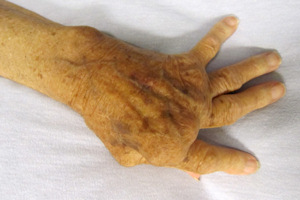 Manchester: Arthritis Research UK-funded scientists at The
University of Manchester have identified a new way in which genotyping
can be used to predict disease outcomes among sufferers of rheumatoid
arthritis. New studies have shown that certain genetic variants
are associated with higher or lower risks of increased disease severity.
Manchester: Arthritis Research UK-funded scientists at The
University of Manchester have identified a new way in which genotyping
can be used to predict disease outcomes among sufferers of rheumatoid
arthritis. New studies have shown that certain genetic variants
are associated with higher or lower risks of increased disease severity.Understanding the body’s response to worms and allergies
 Manchester: Research from The University of Manchester is
bringing scientists a step closer to developing new therapies for
controlling the body’s response to allergies and parasitic worm
infections. In a paper published in Nature Communications, Pr Andrew
MacDonald discovered a new way that immune cells control
inflammation during worm infection or an allergic response like asthma.
It’s important to understand how this type of inflammation is controlled
as it can be very damaging and in some cases lead to long term
conditions.
Manchester: Research from The University of Manchester is
bringing scientists a step closer to developing new therapies for
controlling the body’s response to allergies and parasitic worm
infections. In a paper published in Nature Communications, Pr Andrew
MacDonald discovered a new way that immune cells control
inflammation during worm infection or an allergic response like asthma.
It’s important to understand how this type of inflammation is controlled
as it can be very damaging and in some cases lead to long term
conditions.Link between proteins points to possibilities for future Alzheimer’s treatments
Cambridge: Researchers
have identified how proteins that play a key role in Alzheimer’s
disease are linked in a pathway that controls its progression, and that
drugs targeting this pathway may be a potential new way of treating the
disease. Researchers
have found that the proteins that control the progression of
Alzheimer’s are linked in a pathway, and that drugs targeting this
pathway may be a way of treating the disease, which affects 40 million
people worldwide. The findings are published today (23 April) in the journal Cell Reports.
Cambridge: Researchers
have identified how proteins that play a key role in Alzheimer’s
disease are linked in a pathway that controls its progression, and that
drugs targeting this pathway may be a potential new way of treating the
disease. Researchers
have found that the proteins that control the progression of
Alzheimer’s are linked in a pathway, and that drugs targeting this
pathway may be a way of treating the disease, which affects 40 million
people worldwide. The findings are published today (23 April) in the journal Cell Reports.
Air pollution costs European economies US$ 1.6 trillion a year in diseases and deaths
WHO: A staggering US$ 1.6 trillion is the economic cost of the approximate
600 000 premature deaths and of the diseases caused by air pollution in
the WHO European Region in 2010, according to the first-ever study of
these costs conducted for the Region. The amount is nearly equivalent to
one tenth of the gross domestic product (GDP) of the entire European
Union in 2013. "Curbing the
health effects of air pollution pays dividends. The evidence we have
provides decision-makers across the whole of government with a
compelling reason to act. If different sectors come together on this, we
not only save more lives but also achieve results that are worth
astounding amounts of money," says Dr Zsuzsanna Jakab, WHO Regional
Director for Europe. "Cross-sectoral work is the backbone of the
environment and health process, which was initiated 26 years ago, and it
is even more relevant today in the discussions taking place at this
meeting in Haifa."
Inflammatory bowel disease: a gut bacterium with beneficial properties
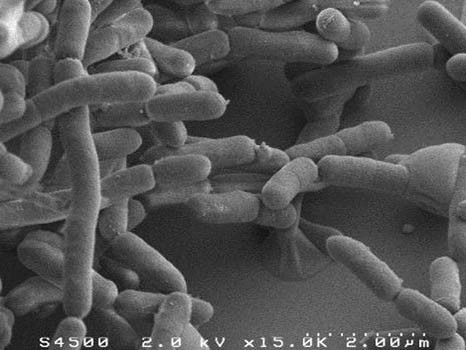 INSERM: Several years ago, INRA researchers in Jouy-en-Josas showed
that levels of the gut bacterium Faecalibacterium prausnitzii tended to
decline in the human gut at the onset of chronic inflammatory bowel
disease (IBD). Is this disappearance of F. prausnitzii one of the causes
of inflammation, or is its disappearance a consequence of the disease?
Today, the same INRA team, in collaboration with an American team
(Berkeley), AgroParisTech, lnserm, AP-HP and UPMC, are answering these
questions. Not only do their results show that F. prausnitzii plays an
active role in protecting against intestinal inflammation, they also
propose explanations regarding mechanisms of action. This research is
published in the journal mBio on 21 April 2015.
INSERM: Several years ago, INRA researchers in Jouy-en-Josas showed
that levels of the gut bacterium Faecalibacterium prausnitzii tended to
decline in the human gut at the onset of chronic inflammatory bowel
disease (IBD). Is this disappearance of F. prausnitzii one of the causes
of inflammation, or is its disappearance a consequence of the disease?
Today, the same INRA team, in collaboration with an American team
(Berkeley), AgroParisTech, lnserm, AP-HP and UPMC, are answering these
questions. Not only do their results show that F. prausnitzii plays an
active role in protecting against intestinal inflammation, they also
propose explanations regarding mechanisms of action. This research is
published in the journal mBio on 21 April 2015.New gene therapy success in a rare disease of the immune system: Wiskott-Aldrich syndrome
INSERM: French teams, and English teams demonstrated the efficacy
of gene therapy treatment for Wiskott-Aldrich Syndrome (WAS). Six
children that were treated and followed for at least 9 months had their
immune system restored and clinical condition improved. This work, which
was published today in the Journal of the American Medical Association (JAMA), was carried out with support from the AFM-Telethon.
Caring for blindness: a new protein in sight?
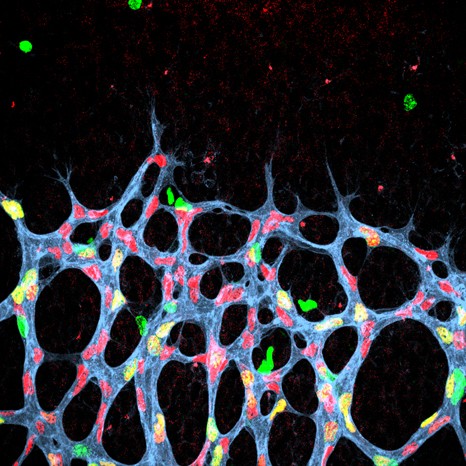 INSERM: Vasoproliferative ocular diseases are responsible for sight
loss in millions of people in the industrialised countries. Many
patients do not currently respond to the treatment offered, which
targets a specific factor, VEGF. A team of Inserm researchers at the
Vision Institute (Inserm/CNRS/Pierre and Marie Curie University), in
association with a team from the Yale Cardiovascular Research Center,
have demonstrated in an animal model that blocking another protein,
Slit2, prevents the pathological blood vessel development that causes
these diseases. This work is published in Nature Medicine.
INSERM: Vasoproliferative ocular diseases are responsible for sight
loss in millions of people in the industrialised countries. Many
patients do not currently respond to the treatment offered, which
targets a specific factor, VEGF. A team of Inserm researchers at the
Vision Institute (Inserm/CNRS/Pierre and Marie Curie University), in
association with a team from the Yale Cardiovascular Research Center,
have demonstrated in an animal model that blocking another protein,
Slit2, prevents the pathological blood vessel development that causes
these diseases. This work is published in Nature Medicine.Natural reparative capacity of teeth elucidated
INSERM: Researchers
at Inserm and Paris Descartes University have just taken an important
step in research on stem cells and dental repair. They have managed to
isolate dental stem cell lines and to describe the natural mechanism by
which they repair lesions in the teeth. This fundamental discovery will
make it possible to initiate unprecedented therapeutic strategies to
mobilise the resident dental stem cells and magnify their natural
capacity for repair. These results are published in the journal Stem Cells.
Type 2 diabetes: understanding regulation of sugar levels for better treatment
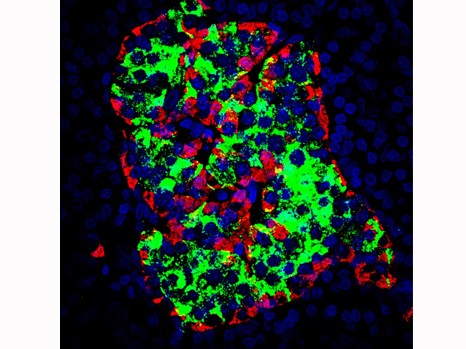 INSERM: Individuals with type 2 diabetes, who are resistant to
insulin, have an excess blood glucose level, which they are now trying
to reduce using a new class of diabetes drugs known as the gliflozins.
These new drugs lower the sugar level but also produce a paradoxical
effect, leading to the secretion of glucagon, a supplementary source of
glucose. Joint research units 1190, “Translational Research for
Diabetes,” (University of Lille, Inserm and Lille Regional University
Hospital), directed by François Pattou, and 1011 “Nuclear Receptors,
Cardiovascular Diseases and Diabetes,” directed by Bart Staels[1],
describe a new mechanism that controls glucagon secretion in humans,
making it possible to elucidate this phenomenon and suggesting a
modification of this new type of treatment.
INSERM: Individuals with type 2 diabetes, who are resistant to
insulin, have an excess blood glucose level, which they are now trying
to reduce using a new class of diabetes drugs known as the gliflozins.
These new drugs lower the sugar level but also produce a paradoxical
effect, leading to the secretion of glucagon, a supplementary source of
glucose. Joint research units 1190, “Translational Research for
Diabetes,” (University of Lille, Inserm and Lille Regional University
Hospital), directed by François Pattou, and 1011 “Nuclear Receptors,
Cardiovascular Diseases and Diabetes,” directed by Bart Staels[1],
describe a new mechanism that controls glucagon secretion in humans,
making it possible to elucidate this phenomenon and suggesting a
modification of this new type of treatment.Detailed structure of human ribosome revealed
CNRS: A team at the
CNRS/ Inserm has evidenced, at the atomic scale, the threedimensional structure
of the complete human ribosome and the detailed interactions that occur within
it. These findings, obtained using a technology that is unique in France, open the
way to further exploring some of the adverse effects of antibiotics, and, in
the longer term, to the treatment of diseases related to ribosomal dysfunctions
and the deregulation of protein synthesis. This work is published in Nature on
22 April 2015.
Coffee could protect against breast cancer recurrence
Lund: A
number of research studies have shown that coffee helps to protect
against breast cancer. A new study led by Lund University, has confirmed
that coffee inhibits the growth of tumours and reduces the risk of
recurrence in women who have been diagnosed with breast cancer and
treated with the drug tamoxifen.
Danish discovery may change cancer treatment
 Copenhagen: Danish researchers from the University of Copenhagen and Herlev
Hospital have made a discovery that may change the principles for
treating certain types of cancer. The discovery relates to the so-called telomeres that constitute the
ends of human chromosomes. Short telomeres are related to unhealthy
lifestyles, old age and the male gender – all of which are risk factors
in terms of high mortality. Up until now, the assumption has been that
short telomeres are related to ill health. The challenge for researchers
worldwide has therefore been to find out whether or not the short
telomeres were indeed a signifier or an indirect cause of increased
mortality.
Copenhagen: Danish researchers from the University of Copenhagen and Herlev
Hospital have made a discovery that may change the principles for
treating certain types of cancer. The discovery relates to the so-called telomeres that constitute the
ends of human chromosomes. Short telomeres are related to unhealthy
lifestyles, old age and the male gender – all of which are risk factors
in terms of high mortality. Up until now, the assumption has been that
short telomeres are related to ill health. The challenge for researchers
worldwide has therefore been to find out whether or not the short
telomeres were indeed a signifier or an indirect cause of increased
mortality.Microneedle Patch for Measles Vaccination Could Be a Game Changer
CDC: A new microneedle patch being developed by the Georgia Institute of
Technology and the Centers for Disease Control and Prevention (CDC)
could make it easier to vaccinate people against measles and other
vaccine-preventable diseases. The microneedle patch is designed to
be administered by minimally trained workers and to simplify storage,
distribution, and disposal compared with conventional vaccines.
FDA approves first generic Abilify to treat mental illnesses
FDA: The U.S. Food and Drug Administration today approved the first
generic versions of Abilify (aripiprazole). Generic aripiprazole is an
atypical antipsychotic drug approved to treat schizophrenia and bipolar
disorder. Alembic Pharmaceuticals Ltd., Hetero Labs Ltd., Teva
Pharmaceuticals and Torrent Pharmaceuticals Ltd. have received FDA
approval to market generic aripiprazole in multiple strengths and dosage
forms. “Having access to treatments is important for patients
with long-term health conditions,” said John Peters, M.D., acting
director of the Office of Generic Drugs in the FDA’s Center for Drug
Evaluation and Research. “Health care professionals and consumers can be
assured that FDA-approved generic drugs have met the same rigorous
standards as the brand-name drug.”
HIV vaccine helps infected patients fight the virus
Scimex: Italian scientists have boosted a
HIV-infected patient's immune system by using a vaccine, which contains a
protein that helps the virus to reproduce, allowing them to fight off
the virus more effectively. They say that the vaccine may help with
virus control, where patients have trouble sticking to an antiretroviral
therapy routine, while also simplifying treatment, and reducing
transmission of the disease. A vaccine containing a protein necessary for virus replication can
boost an HIV-infected patient's immune system, according to clinical
research published in the open access journal Retrovirology. This boost
can result in increased effectiveness of antiretroviral drugs.
"Normal" sleep is still a problem for children with sleep disorder
University of Adelaide researchers have discovered key signs that
children experiencing sleep difficulties continue to suffer health
problems even during periods of so-called "normal" sleep. The
same research has helped to show that surgical removal of adenoids and
tonsils is effective at reversing these problems among children, and may
lead to improvements in brain development and behaviour. Researchers in the University's School of Electrical and Electronic Engineering
have analysed data collected in sleep studies from children who have
been diagnosed with "sleep-disordered breathing", or sleep apnoea. This
condition is linked with poor development of the brain, cognitive and
behavioural issues among children.
Choosing medical tests and treatments wisely
The Conversation: Picture this scenario: Seven days ago you had a really
bad attack of back pain. You can hardly get out of bed, and getting
dressed and in and out of the car is slow and painful. It’s making life
seem miserable. You’re middle-aged but, other than this pain, are well. When you visit your GP, after examining you, she says it appears to
be “non-specific musculo-skeletal pain”, should settle with time, and
that you should stay active. “Shouldn’t you order me an x-ray to find out what it is?” you ask. “It is really bad!” Not so long ago, getting an x-ray for acute back pain was the norm.
Although it’s now known that they don’t help most cases, they are still
used far more frequently than is necessary.
Why do I have stretch marks and what can I do about them?
The Conversation: Most women get them. Some men get them. Few people welcome them. Stretch marks, or stria distensae as they are known medically, are scars that appear when the skin is stretched beyond its elastic limit. Physicists define the elastic limit as the maximum force that can be
applied to solid material before the onset of permanent deformation. In
dermatology, when stresses up to the elastic limit are removed, the skin
resumes its original size and shape. When forces beyond the elastic
limit are removed, the skin remains permanently stretch-marked. The younger you are, the firmer your skin. The firmer your skin, the
lower your elastic limit and the more likely you are to develop stretch
marks. Stretch marks occur most frequently during adolescent or
pregnancy growth.
Why mosquitos zone in on some people, but not others
 The Conversation: Everyone who has ever been camping or walking in the wild with
friends can’t have failed to notice how insects seem to prefer some
people’s flesh to others. Some unlucky souls are totally covered in
itchy red blotches and others are miraculously spared. Sometimes only
some family members are affected. My mother has never been bitten by a
mosquito (though fleas like her) while my brother and I are often the
targets. Previous observations have shown a higher mosquito preference for larger people (who produce more CO2), beer drinkers and pregnant women, and although diet was often suspected as a factor, nothing in what we eat (even garlic) stood up to scrutiny.
The Conversation: Everyone who has ever been camping or walking in the wild with
friends can’t have failed to notice how insects seem to prefer some
people’s flesh to others. Some unlucky souls are totally covered in
itchy red blotches and others are miraculously spared. Sometimes only
some family members are affected. My mother has never been bitten by a
mosquito (though fleas like her) while my brother and I are often the
targets. Previous observations have shown a higher mosquito preference for larger people (who produce more CO2), beer drinkers and pregnant women, and although diet was often suspected as a factor, nothing in what we eat (even garlic) stood up to scrutiny.
Weight loss drug DNP gets deadly new reach online
 The Conversation: A 21-year-old university student has died after taking a chemical she bought over the internet as a way to lose weight. Sadly Eloise Aimee Parry was the latest of a string of young people
to fall victim to the chemical 2,4-dinitrophenol, known as DNP. It is a
very dangerous chemical and scientists have been aware of this for
nearly a century. During World War I, DNP was sometimes used to fill armour-piercing
shells, as a mixture with picric acid, known as Shellite or Tridite. An
explosion in a munitions factory at Rainham in Essex in 1916 was attributed to the chemical. Just like TNT
it was found to be toxic to the munitions workers handling it. Many of
them lost weight dramatically and some even died simply by absorbing it
through their skin. The commercial use of DNP is as a pesticide or
herbicide and, in 2009, 11 workers in a Chinese chemical factory – plus
nine of their relatives – contracted DNP poisoning, their skins turned yellow or even black and two died.
The Conversation: A 21-year-old university student has died after taking a chemical she bought over the internet as a way to lose weight. Sadly Eloise Aimee Parry was the latest of a string of young people
to fall victim to the chemical 2,4-dinitrophenol, known as DNP. It is a
very dangerous chemical and scientists have been aware of this for
nearly a century. During World War I, DNP was sometimes used to fill armour-piercing
shells, as a mixture with picric acid, known as Shellite or Tridite. An
explosion in a munitions factory at Rainham in Essex in 1916 was attributed to the chemical. Just like TNT
it was found to be toxic to the munitions workers handling it. Many of
them lost weight dramatically and some even died simply by absorbing it
through their skin. The commercial use of DNP is as a pesticide or
herbicide and, in 2009, 11 workers in a Chinese chemical factory – plus
nine of their relatives – contracted DNP poisoning, their skins turned yellow or even black and two died.
The mystery of breast cancer
The Conversation: For most of the common cancers, a major cause has been identified: smoking causes 90% of lung cancer worldwide, hepatitis viruses cause most liver cancer, H pylori bacteria causes stomach cancer, Human papillomavirus causes almost all cases of cervical cancer, colon cancer is largely explained by physical activity, diet and family history. But for breast cancer, there is no smoking gun. It is almost unique
among the common cancers of the world in that there is not a known major
cause; there is no consensus among experts that proof of a major cause
has been identified.
Discount food and restaurants stand out as major factors in the obesity epidemic
The Conversation: Obesity has reached epidemic proportions in the United States. The
proportion of US adults who are obese – defined as a body mass index
(BMI), a measure of body fat based on height and weight – of at least
30, has risen from 13% in 1960 to 35% in 2011-2012. Estimates of the annual costs of obesity include 112,000 lives lost and US$190 billion in medical expenses. Economists have been trying to pinpoint some of the economic factors
that could have contributed to this rise in adult obesity for years. Some have examined the role of cheaper and more readily available food, as measured by grocery food prices, restaurant prices, access to restaurants, access to supercenters, or receipt of food stamps. Others have focused on incentives related to physical activity. For instance, cheaper gasoline may lead to more driving and less walking, while urban sprawl reduces community walkability.
Syringe exchange in southern Indiana to respond to an increase in HIV cases: better late than never?
The Conversation: The recent upsurge in HIV cases
linked to injection drug use in southern Indiana has thrust the issue
of syringe exchange programs (SEPs) into the headlines. While
authorities are linking these cases of HIV infection directly to
injecting drugs, it is unknown how many are caused by sexual activity
with an infected drug user. Nearly all states prohibit possession of syringes other than for
medical need through their drug paraphernalia laws. Syringe access laws
that require ID and proof of medical need to purchase them from
pharmacies also exist in the majority of states, including Indiana.
Federal funding of syringe exchange programs is banned as well. To respond to the current outbreak, Indiana Governor Mike Pence signed a 30-day exception to the state’s restriction on needle exchange programs.
When good cells go bad: how malaria turns our red blood cells into killers
Melbourne: Infection with parasites changes the shape of Red Blood Cells (RBCs) resulting in cells becoming stuck in brain blood vessels. This finding may provide an alternative way to combat malaria that
could lead to new drug targets to help RBCs resist being transformed
during infection. Published in the PNAS today, Professor Leann Tilley said lifegiving RBCs
are turned into potential killers upon invasion by malaria parasites.
Subscribe to:
Posts (Atom)



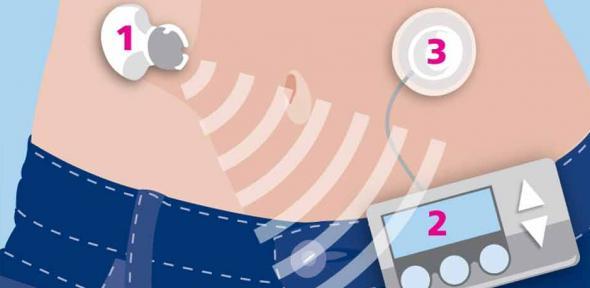
_p072_-_THE_TOWN_DRUNKARD_ASLEEP_ONCE_MORE.jpg/98px-MARK_TWAIN(1883)_p072_-_THE_TOWN_DRUNKARD_ASLEEP_ONCE_MORE.jpg)
.jpg/80px-Das_kind_im_manne_(207561933).jpg)



















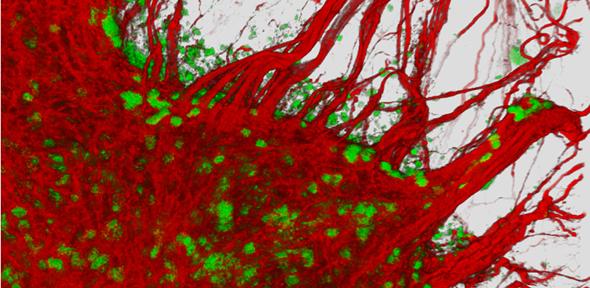



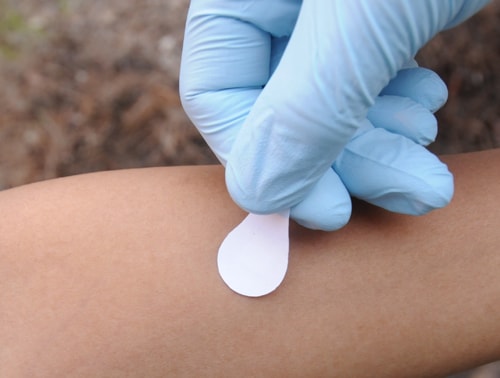
_10mg.jpg/120px-Abilify%C2%AE_(aripiprazole)_10mg.jpg)




